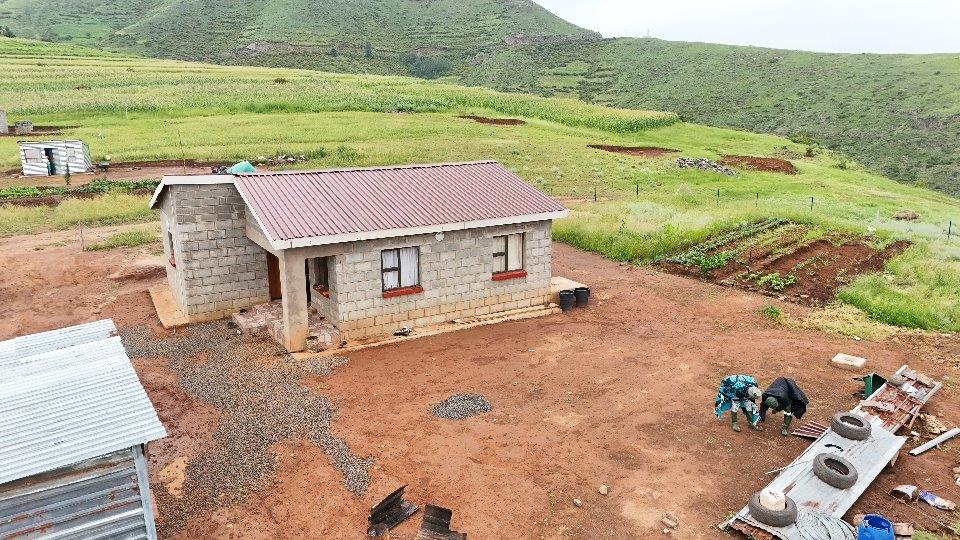Cross-border infrastructure projects foster regional economic integration and growth. Since 2003, approximately 19,5 million cubic metres of water has been transferred to South Africa contributing to water security in the Gauteng region in particular. It has earned Lesotho R18,8 billion in royalties and contributed 11,7 million MWh of hydropower to the country.
They also bring challenges such as physical and economic displacement. The Lesotho Highlands Water Project (LHWP) – one of southern Africa’s most renowned development initiatives – is implementing several socio-economic programmes to mitigate these impacts. These programmes are based on studies conducted during the project’s planning phase. One of these is a resettlement programme that addresses the involuntary relocation and resettlement of households and communities affected by the construction of the Polihali Dam. This has seen the Lesotho Highlands Development Authority (LHDA), the implementing agency, working closely with affected households and community structures to develop a comprehensive resettlement programme for Phase II of the project. This programme addresses the effects of physical and economic displacement by incorporating compensation, relocation, and livelihood restoration – critical aspects of ensuring community well-being.
Resettlement housing construction empowers local contractors
In October 2024, the first resettlement housing construction contract for LHWP Phase II was awarded to Sixty 15 Joint Venture, comprising three Lesotho-based companies: Motjetjepa Investments trading as Eagle Construction, Afro-Asia Engineering, and Geo Construction. Work on the R372.8 million contract officially began on 13 January 2025. The contract includes the construction of a church, community hall, a chief’s office and at least 64 houses at the Tloha re Bue and Ha Ramonakalali resettlement sites in Malingoaneng for households relocating from Tloha re Bue, Masakong and Ha Tlhakola. Additionally, a roads and water reticulation network will be developed at Makalong to support households relocated from Lits’otsong. In alignment with Phase II’s objectives, the contract has been structured to maximise local participation. Subcontracting and material supply packages will be designed for local businesses in areas such as construction, security, transport, material supplies, and catering services.
Community engagement: a collaborative approach
 The Lima-Thaha Joint Venture (LTJV), the Polihali Dam Basin Resettlement Planning and Implementation Consultant, has been engaging communities since 2017. Consultations have included focus groups, public gatherings, household discussions, and meetings with community representatives, councillors and chiefs. Mpaleng Oliphant, the Resettlement Manager at LTJV, is excited about affected communities seeing actual progress on the ground – the construction of their houses.
The Lima-Thaha Joint Venture (LTJV), the Polihali Dam Basin Resettlement Planning and Implementation Consultant, has been engaging communities since 2017. Consultations have included focus groups, public gatherings, household discussions, and meetings with community representatives, councillors and chiefs. Mpaleng Oliphant, the Resettlement Manager at LTJV, is excited about affected communities seeing actual progress on the ground – the construction of their houses.

She highlighted that the resettlement planning process has been collaborative, from identifying affected households and verifying assets to approving compensation offers and ensuring transparent community involvement in decision-making.
Communities affected by relocation and inundation have had the opportunity to influence resettlement site selection, housing designs, village layouts, and compensation preferences.
Planned resettlement sites
The new relocation sites have been carefully designed to provide modern amenities while preserving cultural traditions. Key features include: planned village layouts with streets and essential infrastructure, water reticulation with potable water to be supplied through community standpipes, solar panels for each household with electrical piping provisions, fenced yards, vegetable gardens, and water tanks. Additionally, traditional housing options such as rondavels and mokhoro (traditional huts for fireplaces), accommodating cultural preferences are available. For those opting to remain in Masakong, the village will be upgraded with new roads, water reticulation and solar energy for individual households. Meanwhile, other affected families are choosing to relocate to different areas, acquiring land within or outside the project area. The resettlement process has been structured to prioritise community input and choices. Ntate Nate, a resident of Tloha re Bue, reflected on his experience:
“Resettlement is a big step for us. It was comforting to have thorough consultations where our concerns were genuinely heard. We had platforms to provide feedback and the freedom to choose plans that suit our family’s needs. I especially appreciate that we can reuse materials from our old homes to build traditional fire huts. This makes the transition more meaningful.”
Progress on replacement housing
The construction of replacement houses began in January 2022. To date, nine houses have been built in Checheng, Mapholaneng, Makokoaneng, Ha Sekila, Phakoeng, Ha Poli (Leribe) for households affected by the Polihali North-East Access Road (PNEAR) and Polihali Western Access Corridor (PWAC) developments. Additionally, in 2023, nine households in Liphofung were relocated due to the transfer tunnel quarry in Leribe. The four-household village of Lits’otsong was also relocated to Makalong in Mokhotlong last year.
Ongoing compensation and resettlement efforts
It is estimated that 11,700 assets will be affected by LHWP Phase II. Currently 270 households and 21 business structures are identified for relocation. Over 570 graves have been relocated from access road sites and the site establishment area. Additional grave relocations for sites affected by the reservoir are scheduled for the coming months. As LHWP Phase II progresses, resettlement and compensation remain central to ensuring the well-being of affected communities. The compensation and resettlement process is progressive, unfolding alongside project developments. Compensation payments continue for affected assets, ensuring that all impacted households receive fair compensation and support. The project’s structured approach, grounded in extensive community engagement, sustainable infrastructure development, and local business participation, aims to ease the transition for displaced families while creating lasting benefits for the region.










